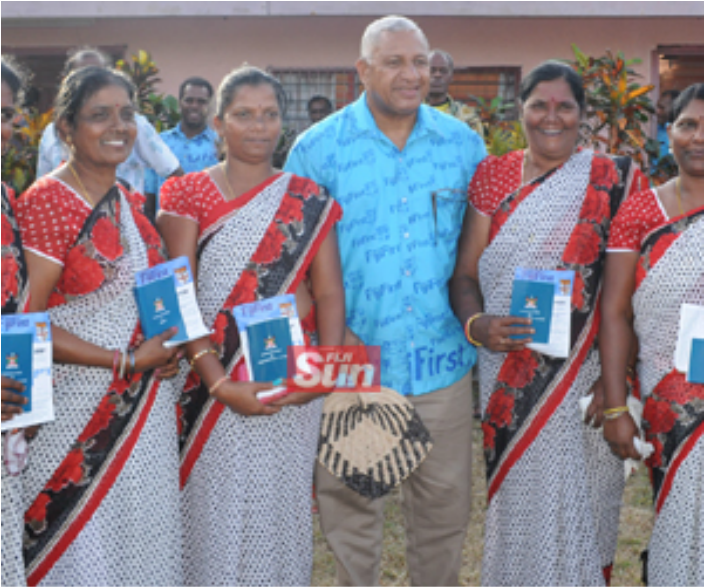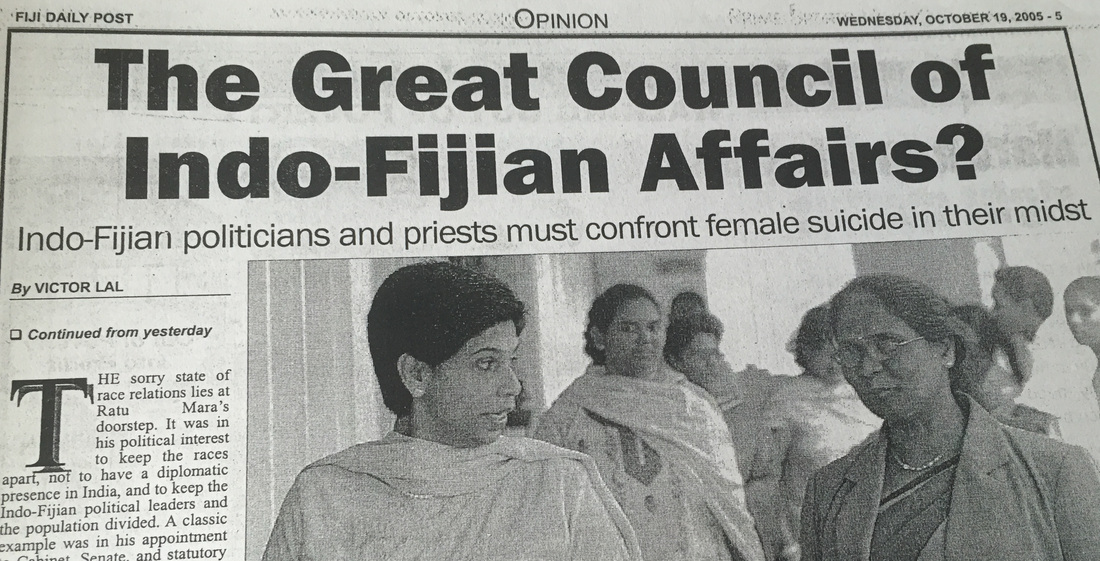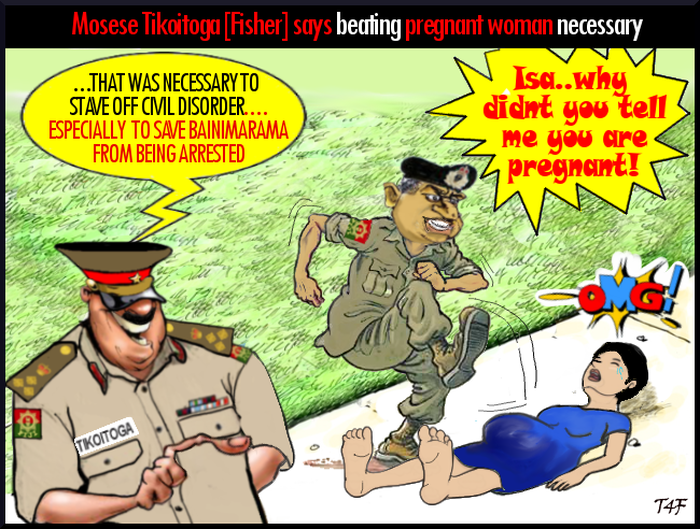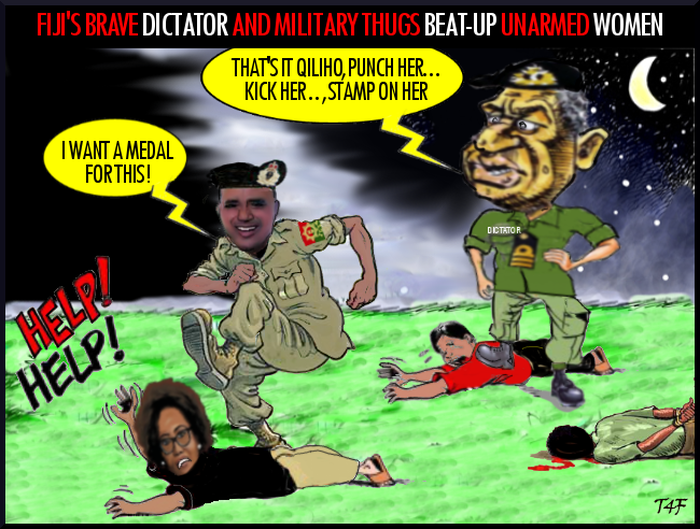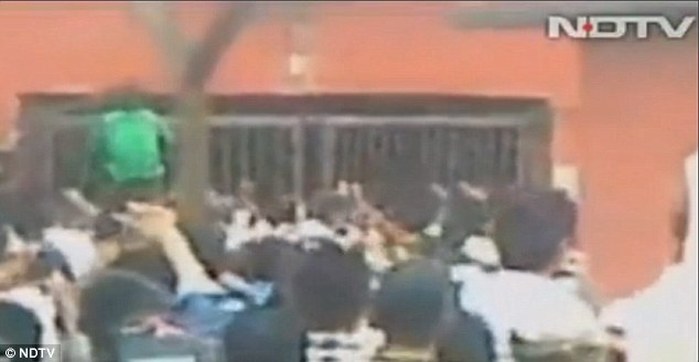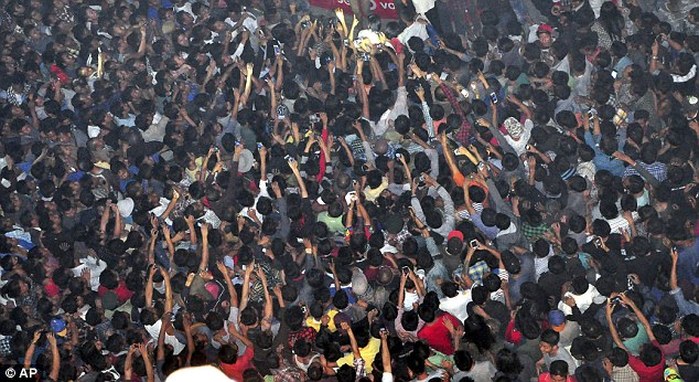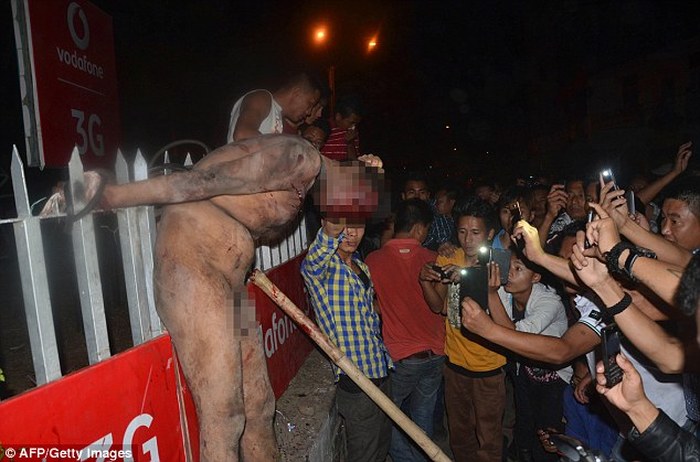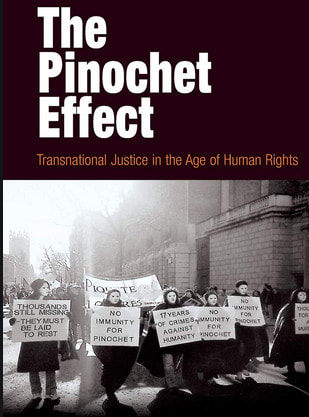
The Pacific islands conjure up images of paradise: white sand beaches, transparent sparkling aquamarine seas, and happy smiling islanders. But what lies beneath is the unacceptable treatment of women and rampant gender inequality, as the iconic tourist images mask the highest rates in the world of intimate partner sexual and domestic violence against women, ranging from around 68% in Papua New Guinea (PNG), Fiji and Kiribati to 40% in Samoa. Against this milieu, paradise is surely lost for women and girls in the Pacific.
Not much appears to have changed since Susan Brownmiller wrote her brilliant seminal book Against Our Will: Men, Women and Rape in 1975. That book had such a profound impact on me becoming a feminist in my early 20s.
Gender equality appears to have advanced everywhere, and so, you would think, would attitudes about wife beating. However, according to a new UNFPA report, this is far from the truth.
The report highlights how in Timor-Leste a staggering 81% of teenage girls believe a husband is justified in beating his wife for at least one reason. The figures were slightly lower for Kiribati, Solomon Islands, Tuvalu, Samoa, and Vanuatu, but still speak volumes about how girls perceive their mothers’ status. In Tonga, faring somewhat better, just over 25% of girls think domestic violence is acceptable in some circumstances.
Aren’t we raising our daughters differently? Aren’t we asking them to dream a different dream, one that allows them lives with dignity, husbands who respect them, and a decent education followed by paid work? Not so, it seems.
Picture how the inter-generational cycle of domestic violence, actual criminal assault against women in the home, is perpetuated. Teenage girls watch their mothers being beaten by their fathers. The father is the patriarch after all. It is he who must be obeyed. These impressionable young women consider it justifiable, because their mothers do. They too get beaten when they are grown women, and in turn they teach their own daughters—even if it is only by subliminal socialization—that it is acceptable too. And so the cycle continues and that’s why those 81% of Timorese girls think it’s fine for their fathers to beat their mothers.
Last week, Dame Meg Taylor, Secretary General of the Pacific Islands Forum and the first female leader of the regional organization, reminded us of some of these problems in the Pacific. In ADB’s Manila headquarters as annual Gender Month distinguished speaker, Dame Meg pointed out that the last 2012 Women’s Economic Opportunity Index, published by the Economist Intelligence Unit, provided a global comparison of women’s economic opportunities including, for the first time, six Pacific countries. The Pacific ranked very poorly in this index of 128 countries, with most of the six surveyed countries in the bottom 25%. The Solomon Islands and PNG were ranked at 124 and 125, respectively.
“The urgency of dealing with gender-based violence in the Pacific is self-evident,” she said.
It is important to remember that one cannot point to individual successful women to rationalize the advancement of gender equality, as is commonly done in the Pacific. Gender indexes measure women’s advancement as a group. The success of individual women is laudable, but it is an anomaly, an exception to the rule. They succeed in spite of the system, not because of it. It is important and appropriate to celebrate them for many reasons, including their importance as role models to girls and young women. But this cannot, and should not, be an overall indicator of gender equality.
So what can we do about it?
For a start we need to question the fundamentals of patriarchy that require fathers to reign supreme. Based on my experience representing hundreds of battered women in court, try counseling and mediation first, but if that does not work then prosecute and seek punishment. Women should expose their husbands and partners for their criminal acts. This would send an important message to their daughters.
We must raise our daughters and sons differently than we have been. We need to tell them over and over again at home, at school and in the churches, mosques and temples that hitting a woman is a criminal assault, a violation of a woman’s human rights. The same act committed outside the home would be considered a crime. They need to understand that if their father considered their mother his equal, he would not beat her.
Women have to defend themselves and say enough is enough. Ultimately they have to walk away from marriages in which men refuse to change. These small acts of dignity may turn the tide for their daughters. All of this reminds me of why I am still a feminist. For Pacific island women and girls, we need to keep working until paradise is regained.
*A lawyer by profession, Ms. Jalal was a Commissioner with the Fiji Human Rights Commission. She is the author of the Law for Pacific Women, architect of the Family Law Act 2005, and former Chair of the UN Committee on Harmful Practices Against Women, and continues to be a member of the Fiji Women’s Rights Movement, Women Living Under Muslim Law, and the Asia-Pacific Forum on Women, Law and Development. Ms. Jalal is also a Commissioner on the International Commission of Jurists, Geneva.
Source:http://blogs.adb.org/blog/paradise-lost-violence-against-women-and-gender-inequality-pacific-islands
Indo-Fijian politicians and priests must confront female suicide in their midst
‘The woman’s cause is man’s, they rise or sink; Together, dwarf’d or godlike, bond or free.’
BY VICTOR LAL
Fiji's Daily Post,
October 2005
(Original in Two Parts)
IT seems odd that the Indo-Fijian politicians and priests, who have appropriated the mantle of leadership on behalf of their community, are eerily silent on some of the social ills afflicting their womenfolk, notably the high incidence of suicide or attempted suicide, especially among families engaged in sugar-cane farming. In their quest for political power and priestly status, they are neglecting to concern or confront the high suicide rate, particularly among Indo-Fijian women, which used be one of the major evils of the indenture system from 1879 to 1920 in the country. The indentured coolie women who took their own lives or had their lives snuffed by jealous coolie lovers were victims of the degradation, foul, and monstrosity that was inflicted on them in Fiji. Today we live in the 21st Century but it seems that when it comes to the causes of suicide or attempted suicide, we are still living in the 19th Century.
Death is an all-pervasive phenomenon in every society. The questions death raises and the multiple answers to those questions touch upon the most intrinsic parts of human existence. Several reasons have been advanced for the high rate of suicide among Indo-Fijian women–family quarrels, family honour, insufficient dowry money, the despicable practice of ‘bride-burning’, and the impact of coups on the cohesive family nature of the Indo-Fijian community. Some social welfare groups claim that since the 2000 Speight coup a growing despair among Indo-Fijians as well as economic decline, linked to the coup, was fuelling a big rise in suicide. While all these factors may ring true, it seems to this writer that the lack of interest displayed by Indo-Fijian political leaders, including the priests and imams, in confronting the issue collectively is compounding the sorry state of affairs. The Indo-Fijian politicians and the priests are more occupied with reclaiming the political and religious kingdoms than finding ways and means to prevent the Indo-Fijian women from needlessly departing from this world of ours. In particular, the Indo-Fijian politicians have travelled around the world to raise awareness against the Truth and Reconciliation Bill, and yet none has bothered to even organise a workshop or a conference to discuss the ugly and sad truth of suicide, rape, and domestic violence in their own community. Why? What can be done to arrest the problem?
The Great Council of Indo-Fijian Affairs
For years, this writer has squarely blamed the Indo-Fijian and Fijian political leaders for the pathetic plight of the Indo-Fijian community. The Ratu Mara administration, despite it flying the multi-racial flag, never created a Ministry of Indo-Fijian Affairs, similar to the Ministry of Fijian Affairs. Ratu Mara’s political adversaries, notably the National Federation Party (NFP) parliamentarians, were too busy tearing each other part. Even today, the NFP and the FLP Indo-Fijians are still busy fighting each other over the spoils of political office. All they scream is politics, politics, politics, racism, racism, racism or victim, victim, victim. If they could unite, at least on social matters afflicting their community, the life and the lot of the Indo-Fijian community would be much better. Like other suggestions, this writer has for years called upon these quarrelling politicians to form an advisory Great Council of Indo-Fijian Affairs (GCIFA, comprising of Hindus, Muslims, Sikhs, Gujerati and other minor sects), and resembling the Great Council of Chiefs (GCC).
As we are well aware, the GCC, a colonial construct, is a motley collection of different Fijian tribal groups and political parties, but they have, rightly or wrongly, become custodians of Fijian affairs. The Indo-Fijians can belong to different political and religious parties but they can still discuss Indo-Fijian issues. This writer calls upon the FLP leader Mahendra Chaudhry, who claims to have the mandate to speak on behalf of the community, to form such an Indo-Fijian Council with his NFP counterpart, rather than the two merely rubbishing each other and the Qarase administration, which has, at least, set up a Ministry of Multi-Ethnic Affairs. Moreover, the proposed GCIFA should be open to all and sundry Indo-Fijian politicians, including the Minister for Multi-Ethnic Affairs, George Shiu Raj. After all, the Minister for Fijian Affairs was, in the old days of Ratu Mara’s administration, also chairman of the Great Council of Chiefs. It is absurd for the Indo-Fijians to be members of GOPIO, the Global Organization of People of Indian Origin, with whom we share very little in common, than to belong to the proposed GCIFA.
To digress slightly, the Qarase administration has, since coming to power, handed out the majority of the multi-ethnic scholarships to Indo-Fijians, without fear or favour. What did Chaudhry do when he ascended to the political throne? He controversially appointed his son as his private secretary, with topped up salary. As I have pointed out elsewhere, by creating a father-son political Raj, Chaudhry had deprived himself of crucial outside advise, and alienated many Indo-Fijian intellectuals, who simply withheld any ideas and policies that they would have liked to be included for the betterment of the country.
Furthermore, credit, and not outright curse, should be extended to Qarase for opening up direct diplomatic links with India. For God’s sake, at least, the man is trying to unite the two countries together. The Indo-Fijian leaders cannot even unite on a social level. The FLP should stop screaming that the trip is merely a political propaganda. What the FLP seems to have forgotten is that there is now an all-inclusive Congress Party, headed by an Indian of Italian origin, Mrs Sonia Gandhi, instead of the racist and chauvinistic BJP government, which was the darling of GOPIO and the FLP.
Prime Minister Qarase’s trip to India was the handiwork of the Indian High Commissioner Ajay Singh, who is a Congress appointee to this country. He is also a direct descendant of Indian-Fijian coolies, and his own father was India’s High Commissioner to Fiji, and the author of Fiji: My Father’s Land. The current high commissioner is acutely aware of Indo-Fijian dynamics, politics, leadership, and as this writer has pointed out previously, India will sacrifice the vested political interests of a few Indo-Fijian politicians in its pursuit of becoming a global economic power. Fiji is a lynchpin in their Asia-Pacific game plan: culturally, economically, and socially. The red-carpet treatment the Prime Minister is receiving in all parts of India is an endorsement of the fact. Even the Indian Prime Minister Manmohan Singh postponed his visit to earthquake areas to entertain our Prime Minister in New Delhi.
It thus becomes more pressing that the NFP or the FLP should take the initiative in advocating GCIFA, which might socially unite the Indo-Fijians. Moreover, when Chaudhry speaks on behalf of Indo-Fijians, his is a political voice but if GCIFA were to speak out, it would be representing a vast majority of the Indo-Fijians. Moreover, as this writer intends to demonstrate one of these days, there is every likelihood of Indo-Fijian FLP MPs being wiped out. After all, what have they done since the 2001 August elections? Boycotts, boycotts, boycotts. They have turned the once multi-racial FLP into an ‘Indian Party’, with the question of land as the roller coaster elephant to be paraded at the polls. The FLP should also stop glorifying the Ratu Mara reign just because he appointed Chaudhry as Prime Minister. Ratu Mara had his own private reasons.
The sorry state of race relations lies at Ratu Mara’s doorstep. It was in his political interest to keep the races apart, not to have a diplomatic presence in India, and to keep the Indo-Fijian political leaders and the population divided. A classic example was in his appointment to Cabinet, Senate, and statutory bodies of Indo-Fijians – they were all Muslims, a trend that still continues to this day. This writer is yet to come across an Indo-Fijian as a High Commissioner to London. To some, these might be harsh charges against the great paramount chief, but believe me, it is coming from this writer because he used to sit at Ratu Mara’s feet at his Veiuto residence in the old days. My father was one of those Alliance Party cheerleaders, and we are reaping the consequences of blindly following Ratu Mara’s concept of multi-racialism.
In 1977, the Indo-Fijians had been told that the Alliance Government policy was for half of the university scholarships to be reserved for Fijians and that all qualified and deserving Fijian students should receive them. As a direct result, admission to university courses required a minimum of 216 marks in the New Zealand University Entrance Examination for Fijians, while Indo-Fijian and other students needed higher marks. The NFP interpreted it as a blatant discrimination and the perpetration of double standard. The NFP leader Siddiq Koya added: ‘It is bound to produce recriminations, frustrations, bitterness, the destruction of the image and reputation of the university and indeed the Government of the day in the eyes of the world.’ He reminded the Indo-Fijians, inter alia, about discrimination not only in education but also in the military forces.
In 1975, the Minister for Education had decreed that Government would not contribute funds for free and partly free places in schools to non-Fijians from the third term of the school year. To Indo-Fijians this smacked of racialism, prompting even the Alliance Party’s own attorney-general Sir Vijay Singh, to state: ‘The decision is deplorable because of its distressingly repellent odour of crude racialism.’ Another NFP leader, Jai Ram Reddy, went one step further; he accused Ratu Mara of practising racism at all strategic levels of government.
The GCIFA should be a social and religious forum for the Indo-Fijian community. The Hindu, Muslim and Sikh and other Indo-Fijian organisations could also nominate representatives to the proposed GCIFA, which could also include the likes of Shameema Ali, the current director of the Fiji Women’s Crisis Centre, and Shaista Shameem, of the Fiji Human Rights Commission. Furthermore, it could also draw upon the best intellectual talents of the community for outside advice, like the GCC has demonstrated over the years. This writer, and many other Indo-Fijians are sick as parrots to have the issue of only political and land rights rammed down their throats, year in, year out, and century in, century out. Take, for example, the question of ALTA v NLTA, which also has a social dimension, and is allegedly linked to suicide and attempted suicide.
So far, Indo-Fijian intellectuals have not had the opportunity nor have been invited by Indo-Fijian political leaders to put forward their own views on the contentious issue. At least, if we had a GCIFA, a wide-range of views and ideas could have been discussed, and later transmitted to the Great Council of Chiefs for their consideration. Some Indo-Fijians, who are versed in the Fijian language, could have even volunteered as GCIFA representatives to the august body. This writer has grave reservations with Chaudhry’s position on ALTA, but there is no other avenue open to him, except to reluctantly embroil in a public debate through the newspapers. The GCIFA, like the GCC, would have spared a public slinging match on all sides. After all, most of us are also descended from Indian coolies, except the Gujarati merchants in the country, but who are now a crucial component of the Indo-Fijian community. Lets return to the question of the plight of Indo-Fijian women and the proposed GCIFA, and the lessons from the GCC.
The Chiefs and Fijian Women
Shortly after the formation of the GCC in 1875, the Fijian chiefs immediately set about changing the status of their women. In old Fiji, Fijian women were subservient in society. Like the Indian sati of the old India, Fijian wives were strangled on death of their husbands. Although the Fijian women had property and inheritance rights, they had no official voice or power. They were excluded from governmental positions and had no input in the decision-making process.
After the Deed of Cession in 1874, Fijian women moved rapidly to extend their privileges. They took to yagona drinking, breaking the age-old tabu (unfortunately it has now become a serious problem, not because of women drinkers but men). Marriage customs were shortly revised, and women were no longer blamed for the break-up of traditional married life. While the bulis used to complain that ‘women have none of that modest delicacy and respect for their husbands, which they formerly had’, the British administrators responded by blaming the Fijian men for mistreating their women, including the onset of health problems. The GCC responded by disapproving polygamy, and the chiefs who refused to give up all but one of their wives were denied government positions. The GCC also discredited the practice of arranged marriages. The chiefs also discouraged the customary presenting of property (dowry) to the brides’ parents, with the Roko Tui Bua noting that, ‘the old system is little else than a buying and selling, and the man is impoverished by it’. The Roko Tui Kadavu claimed that unhappy marriages and serious troubles arose from the old Fijian system. The remedy for a happy marriage, suggested the chiefs, was mutual love.
The chiefs also confronted the white men and their grip on Fijian women. Historically, European men had resided with the Fijian marama. The chiefs were however furious that co-habitation between Fijian men and white women was strongly prevented by the colonial government. In 1878, the chiefs entreated to Governor Sir Arthur Hamilton Gordon: ‘We ask Your Excellency to hear us in this matter hoping you may be able to devise some measure for preventing white men taking, carrying off, and detaining, native married women. Our Native Regulations, we know, does not apply to them but it is a thing that causes great vexation and trouble to the husbands, and it is also a most unbecoming thing, and has the appearance to the people that law is not the same to all.’ A Lauan native magistrate protested: ‘The white man’s style of simply cohabiting with a woman is the rule now at Lau, and the land has become filthy through it, and we have been much pained and annoyed.’ What made the Fijian woman to fall for the white fella? The chiefs felt that it was the ability of the White men to provide Fijian women with otherwise unobtainable gifts.
But how were the chiefs going to prevent cohabitation. Some chiefs felt that their women should be punished, fearing that ‘if once we allow our women to do as they please, they will become unmanageable’. Other chiefs strongly disagreed, arguing that the Fijian women were only reacting to village problems created by the chiefs. When the chiefs failed to come up with a solution, they turned to Governor Thurston, chief of all chiefs, but he refused to help out, and instead blamed the chiefs for their allegedly unclean lives, and the harsh, improper treatment of their women by their own families. He said no laws could prevent co-habitation. In the end, the chiefs and their women folk sorted out many of their problems, and today the phenomena of suicide among Fijian women is rare in the country. The Indo-Fijian women did not have the same benefit or the institution of chieftaincy, for today all Indo-Fijians have become ‘chiefs and no Indians’.
The Indo-Fijian Women Must be Free
In oppressing Indo-Fijian women, it is sometimes, indeed generally, forgotten by their men that their exclusion from the life of the nation as such, and their confinement to home interests, are of very modern growth in Fiji. We need not go back to the far off days of goddess Savitri, in order to prove that a girl might wander about outside her home, and might fall in love before her parents had chosen her future husband. She has always been in a large measure the source of strength and inspiration, and there are instances in the history of all nations where women have been the types of all the highest qualities. The Indo-Fijians have Savitri, the ideal perfect Love, who conquered Death; they have Sita, who is held in the highest reverence as the ideal of Indian womanhood. Women have always exerted a great influence on every race.
It is said, ‘The hand that rocks the cradle is the power that moves the world’. It looks impossible that Indo-Fijians can be free if the other half is held in bondage. That is a question with which we, in the Fiji of these changing times, are confronted, and it looks as if in the path of our people’s destiny the words of a poet ring truer than ever: ‘The woman’s cause is man’s, they rise or sink; Together, dwarf’d or godlike, bond or free.’ It is the mothers who are the mainspring of all the activities of the race, the mothers who in their very lap arouse race-consciousness, that have been the builders and the mainstay of empires.
To insist on the social obligation for Indo-Fijian woman is not exactly to plead for her equality with man. The confining of the woman within the home is a prohibition not against woman only but one equally against man. If the present barrier to social meeting between the two sexes is to disappear, it will imply an enfranchisement of man even more than woman. Gradually many Indo-Fijian women are being pushed out of their place in Fiji’s life, save as mother, as wife, as head of her household. Within the house none has disputed her sovereignty, but she has ceased to be the counsellor of her husband in his public life and national interests. Man and woman are not identical, but the one is the complement of the other as the two eyes of the human being, the two wings of the bird.
For woman is the shakti, the divine power, and without her man cannot reach the fullness of life. Partner, not subject, comrade, not rival; complement, not antagonist; helper not burden – such is woman to man. However much we may try to explain away ugly facts, it cannot be denied that the position of Indo-Fijian woman in Fiji just now, and for some time past, has been very low, though it was higher in some past ages. The Indo-Fijian women of Fiji, Hindu or Muslim, form a submerged class, though many of them justly wield great influence in the family circle and in society. The generality of Indo-Fijian women have been greatly depressed and their uplift is as necessary both from the moral and social points of view.
Opportunity and encouragement is the key to Indo-Fijian women’s right to life and limb. Education and not subjection is the key to many of the ills. Dowry, for example, which has now become an essential condition for marriage in contemporary Fiji, was initially a practice that began presumably as a gift to daughter as a token of love and affection, or as her right of inheritance on separation from the natal home following marriage. Many Indo-Fijian women gallantly marched from the coolie lines to ‘freedom houses’ but are now trapped, helpless, and rudderless in their own homes in the 21st Century. For some, suicide is the only answer.
The politicians, with the help of the imams and the priests, must demonstrate the same level of interest in preventing Indo-Fijians from drinking ‘paraquat’, a vehicle for suicide, as they are going around in their Pajero vehicles, asking them to swallow their politics and vote for them in the 2006 general election. One solution, as I have already indicated, is the creation of GCIFA to address the many deep social problems that is confronting the Indo-Fijians, especially the high rate of suicide. We cannot ungrudgingly accept it as a fact of life.
To Indo-Fijian men, we remind them of Mahatma Gandhi’s words: ‘Woman is the companion of man, gifted with equal mental capacities. She has the right to participate in very minutest detail in the activities of man and she has an equal right of freedom and liberty with him’. He went on to note that, ‘To call woman the weaker sex is a libel; it is man’s injustice to woman. If by strength is meant brute strength, then, indeed, is woman less brute than man? If by strength is meant moral power, then woman is immeasurably man’s superior’.
Politics alone will not protect the life and dignity of Indo-Fijian womanhood. On the other hand, more Indo-Fijian women must be encouraged to enter national politics, and represent whichever party they want to in the forthcoming general election. And in the process they need to rescue their ‘sisters in distress’. It is ironical that Chaudhry, who has spent most of his time and energy projecting himself as the ‘voice of the Indo-Fijians’ does not have one Indo-Fijian woman as his senator.
The average Indo-Fijian does not contemplate death as a frightening or horrible experience. I heard with approval a family member who, after tending to his beloved wife with the utmost devotion, and after her burial say, ‘She was such a good woman that I know she will be happy now’. What nonsense! The Hindu belief in karma, in reincarnation and in ultimate spiritual liberation puts death and life in a perspective different from that held by people who believe there is but one life, one death, one heaven and one hell.
As far as this writer is concerned, there is no Indo-Fijian leader, who has risen above the prism of power politics to invigorate the Indo-Fijian community, which has fallen into an abyss. Depression, suicide, murder, rape, violence, adultery, incest, prostitution, and other social ills are tearing apart the once proud race in the South Pacific. Considering these facts, there is a strong necessity to form GCIFA, if we are to halt the self-immolation of the community.
The Indo-Fijian leaders do not need political power to act now, to begin the process of setting up the Great Council of Indo-Fijian Affairs. It should complement and not confront the Great Council of Chiefs, who are also charged with taking into account the problems of other races in their midst, and who are an integral part of the society.
Characteristic of many Hindu gatherings is the Shanti Path (Hymn of Peace) culminating in the appeal ‘Aum Shanti, Shanti. Shanti. Shanti.’ (‘God. Peace. Peace. Peace’).
We will never be at peace with other races, unless we are at peace among ourselves, SOCIALLY, I mean, and not POLITICALLY.
